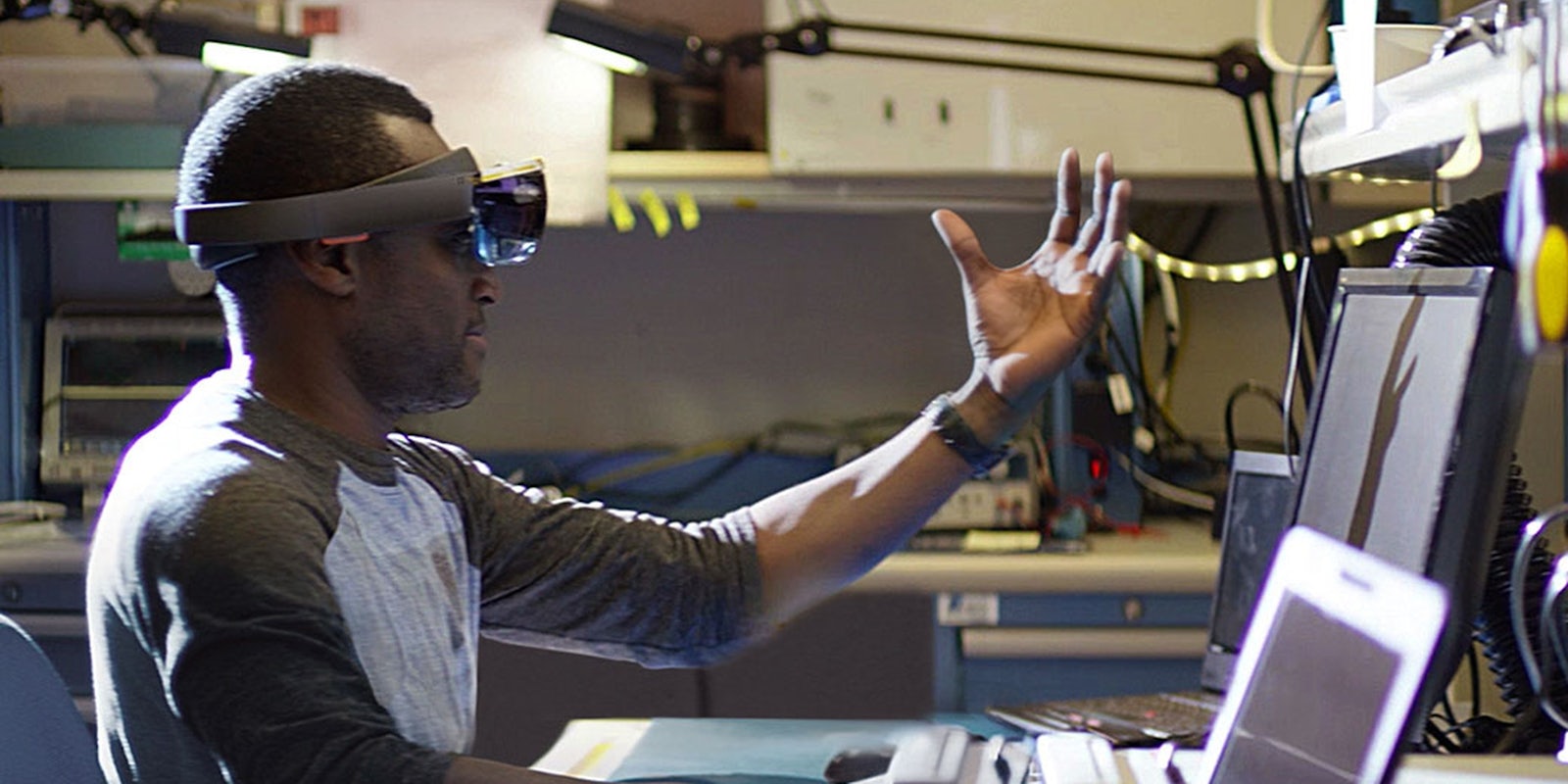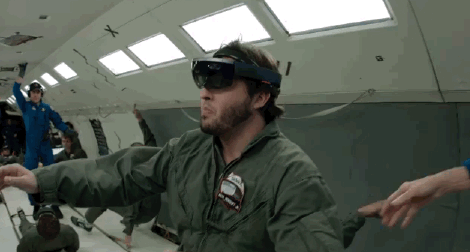Hololens, Microsoft‘s augmented-reality headset, is going to the International Space Station (ISS). On Thursday, NASA announced a project called Sidekick that uses Hololens technology to help astronauts do their jobs better in space.
The Hololens headset puts holograms of objects or illustrations directly in a person’s field of view. Sensor technology allows people to interact with the graphics. For example, Hololens can display a computer screen directly on the living room wall that only the wearer can see and control.
Sidekick lets astronauts aboard ISS use Skype to interact with operators on the ground, sending and receiving real-time guidance through live video. Called “Remote Expert Mode,” this feature helps the Earth crews coach ISS astronauts through difficult tasks in space—a feat impossible before now.
“Procedure Mode” will use Hololens to display illustrations on top of objects that astronauts are handling. This “could lessen the amount of training that future crews will require and could be an invaluable resource for missions deep into our solar system, where communication delays complicate difficult operations,” NASA explained in a press release.
Astronauts aboard the space station are expected to begin using Microsoft’s headset by the end of this year. Sidekick will also find its way to astronauts and researchers deep beneath the ocean on the two-week NASA Extreme Environment Mission Operations (NEEMO) beginning July 21.
Sidekick is the second project to use Hololens to give scientists and engineers augmented- and mixed-reality tools to improve work both on the ground and in space. NASA’s Project OnSight, which debuted earlier this year, brings an augmented-reality version of Mars directly to scientists’ fingertips.
Photo via Microsoft

